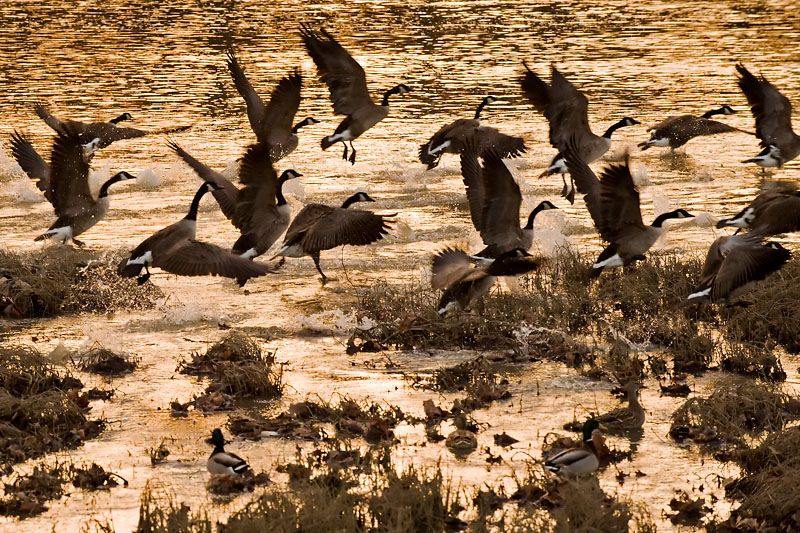 As I fly back to Minnesota to be with my family for Thanksgiving, I think about looking out on the lake I grew up next to. At this time of year, the last leaves have fallen, the temperatures drop into the 20s and everyone is anticipating the first ice on the lake. Overhead, geese are flying south.
As I fly back to Minnesota to be with my family for Thanksgiving, I think about looking out on the lake I grew up next to. At this time of year, the last leaves have fallen, the temperatures drop into the 20s and everyone is anticipating the first ice on the lake. Overhead, geese are flying south.
I recall a story about their annual migration …
Imagine you’re a Canada goose swimming about in a marsh in a northern lake. It’s been a beautiful summer. You’ve been enjoying eating on minnows, insects, seaweed and grasses. The days are getting shorter, though, and you’re not happy about that. In fact, with each passing day, you’re feeling fidgety, even anxious. You notice your brothers and sisters, cousins, aunts and uncles are all a bit edgy. You don’t know want to do. The marsh is such a fine place. All your friends are here. The food is good. But you’ve got this nagging urge for a change of scene. You need to leave. At one point this feeling of agitation overwhelms you … you open your wings and take flight! Now, up in the air, you realize that everyone in your family had the same feeling and are flying next to you. In fact, the whole neighborhood, no, the whole town has taken flight simultaneously and you’re all flying in the same direction! You’re not alone!
This amazing phenomenon is repeated every year by migrating birds all over the world. Germans have a term for the feeling of agitation and restlessness these birds display prior to a great migration: zugenruhe. Jason McLennan, an architect and founder of Living Future Institute, wrote a book by this title, suggesting that humanity is experiencing our own zugenruhe moment. A lot of us are feeling agitated. Whether it’s the increasing divide between red and blue, the unrest in the Middle East and Europe, or the reports of the Greenland ice melt, something is up! It’s about time to act. But where is our south?
I imagine that the urge to fly — now! and in that direction! — feels like an itch, a very personal impulse. Yet the moment of taking off is a collective action of the entire flock. There is no confusion — acting on self-interest WHILE acting in consort with the whole. It’s a paradox.
If only we were geese. We’re wired to act more out of self-interest and less on behalf of the whole. How deeply is this outlook rooted in our nature? Can we act as individuals AND with the whole of our human community in a collective migration toward a more equitable and sustainable living world? The agitation of zugenruhe is felt all around. How can we know the moment to act? How do we know which way to go?




